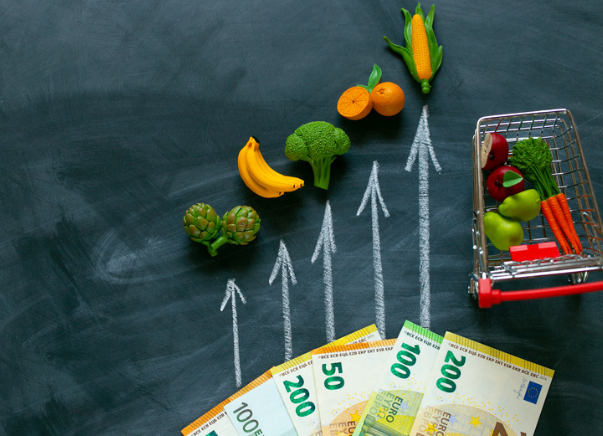Grocery Prices Surge Nationwide After Winter Storms Disrupt Supply Chain
Introduction
Across the United States, grocery prices are experiencing a notable increase as consumers grapple with the repercussions of Winter Storm Caleb and Winter Storm Elijah. These storms have wreaked havoc on the agricultural supply chain, leading to a troubling rise in the costs of essential items like milk, eggs, and fresh produce. This situation has sparked concerns about food affordability, particularly for low-income families who are already facing financial challenges.
Supply Chain Challenges
The impact of the winter storms has been severe, causing significant damage to thousands of acres of farmland and disrupting livestock production. As a result, there has been a marked shortage of dairy and meat products in the market. Furthermore, the storms have created transportation delays, making it increasingly difficult for distributors to deliver grocery items to stores promptly. Food economist Carla Jenkins highlighted the situation, stating, “It’s a perfect storm of supply chain disruptions,” encapsulating the complex challenges currently facing the grocery sector.
Government Response
In response to the ongoing crisis, government officials at various levels are implementing measures aimed at alleviating the burden on consumers and stabilizing the food supply. The United States Department of Agriculture (USDA) has announced plans to distribute emergency food supplies to the regions most affected by the storms. Additionally, financial assistance is being allocated to farmers to help restore and stabilize production. Agriculture Secretary Tom Vilsack assured the public that, “We’re doing everything we can to stabilize the food supply and bring relief to those in need,” emphasizing the government’s commitment to addressing the challenges at hand.
Consumer Guidance
As consumers face rapidly increasing grocery prices, it is vital for them to manage their purchases wisely. Experts are advising individuals to buy only what they need in order to help ease the pressure on already strained supplies. This cautious approach is intended to prevent further exacerbation of the shortages and assist in maintaining availability for all customers. It also serves as a reminder of the interconnectedness of the supply chain and consumer behavior.
Food Bank Demand
The impact of the price surges is being felt not only at the grocery store but also within community assistance programs. Food banks across the country are reporting a significant surge in demand as families seek out assistance to navigate the rising costs of food. Many individuals and families who were previously self-sufficient may now find themselves relying on food banks and charitable organizations to help meet their nutritional needs. This uptick in demand highlights the critical role that these organizations play in supporting communities during times of crisis.
Looking Ahead
As recovery efforts persist following the winter storms, officials are placing a strong emphasis on stabilizing the food supply chain. There is a palpable recognition of the need to support the communities most directly affected by the rising prices. The recent events have underscored the necessity for a resilient agricultural system, one capable of weathering extreme conditions and ensuring food security for all Americans. Stakeholders at various levels are urged to consider long-term strategies designed to bolster the agricultural sector against future disruptions.
Conclusion
The aftermath of Winter Storm Caleb and Winter Storm Elijah has led to a sharp increase in grocery prices nationwide, raising concerns about food affordability for vulnerable populations. The challenges of supply chain disruptions, coupled with government response initiatives, consumer behavior, and heightened demand for food assistance, highlight the intricate and fragile nature of the current food system. As stakeholders work together to address these challenges, it becomes increasingly important to advocate for sustainable practices and policies that will fortify food security in the face of future adversities.
FAQs
Why are grocery prices rising so rapidly?
Grocery prices are increasing due to supply chain disruptions caused by winter storms that have damaged farmland and livestock production, creating shortages of key food items.
What specific food items are seeing the highest price increases?
Staples like milk, eggs, and fresh produce have experienced the most significant price increases due to the impacts of the storms.
What is the government doing to help with the situation?
The USDA is distributing emergency food supplies to affected areas and providing financial assistance to farmers to help stabilize production levels.
How can consumers help alleviate the strain on food supplies?
Consumers are encouraged to buy only what they need to prevent further strain on the supply chain and help ensure that others can access necessary food items.
What should families do if they are struggling to afford groceries?
Families facing difficulties may want to seek assistance from local food banks or community support programs that provide food resources to those in need.

